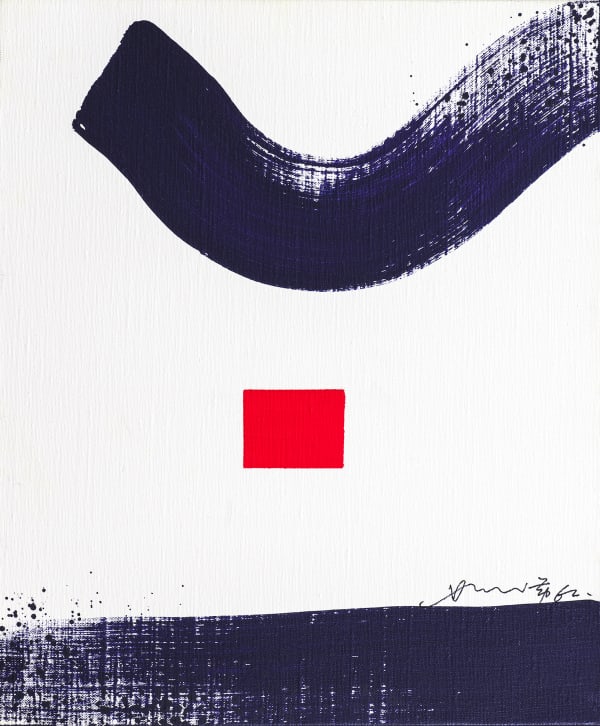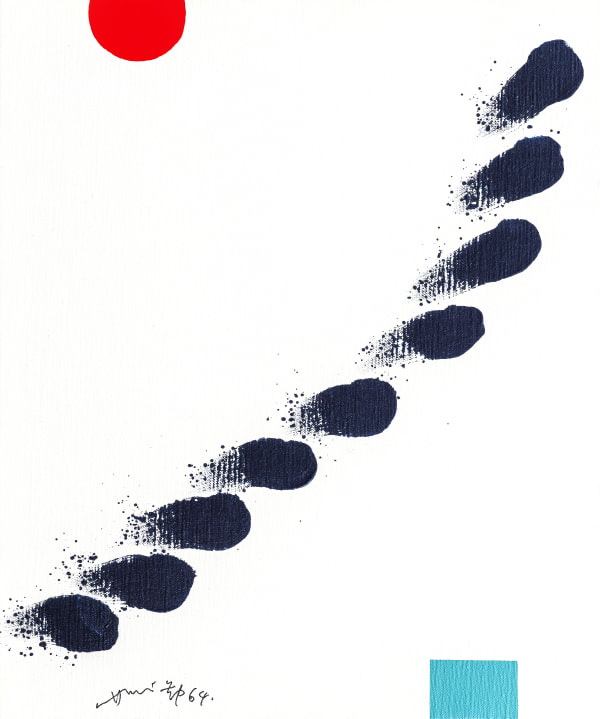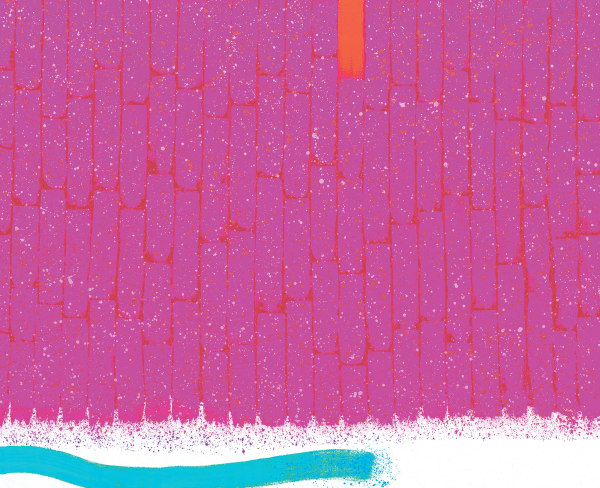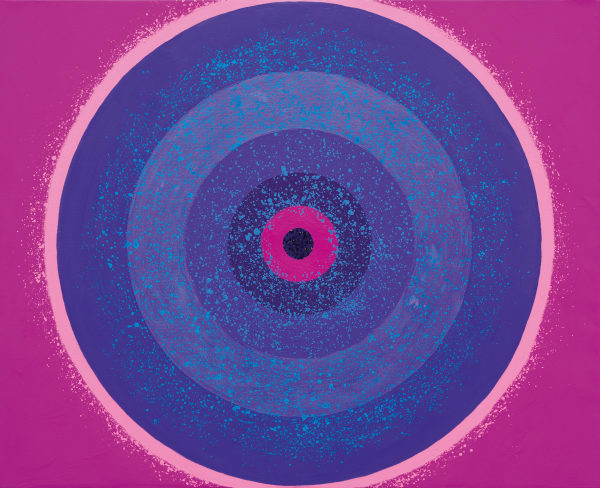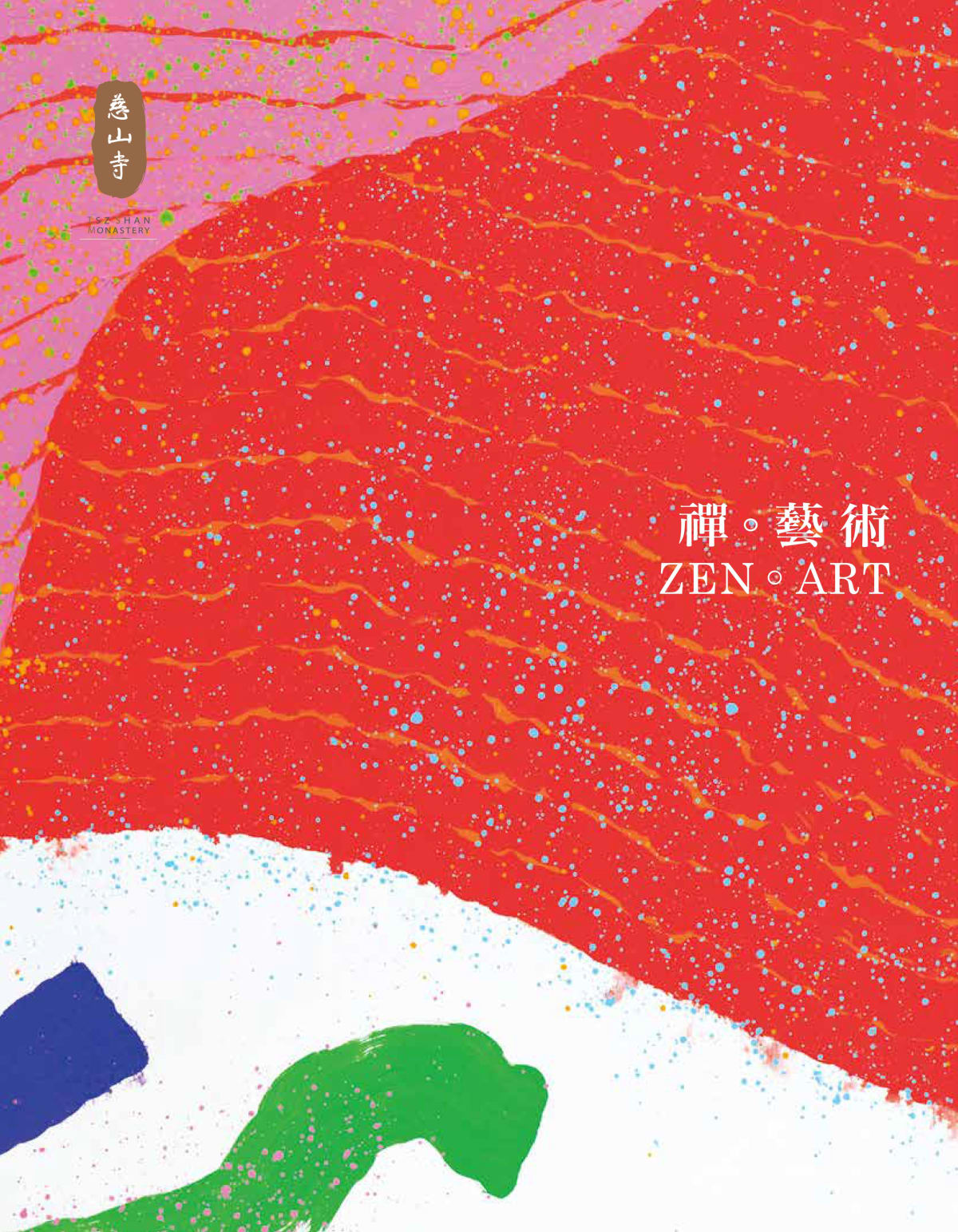Hsiao Chin: ZEN。ART: Tsz Shan Monastery
DEDICATION BY THE ABBOT OF TSZ SHAN MONASTERY VENERABLE THONG HONG
Art and Enlightenment
In the history of Zen Buddhist tradition, there is a very famous Zen Koan named the Flower Sermon.
The Flower Sermon story recounts that “Sakyamuni Buddha held up a flower in public as he was preparing to expound the teaching to his disciples at the Vulture Peak (Gṛdhrakūṭa), in India. The audience sat there in silence, failing to grasp the intendment of this gesture. Only Mahākāśyapa broke into a slight smiled with pleasure brightening his countenance. Buddha claimed as follows: “I possess the true Dharma eye, the marvelous mind of Nirvana, the true form of the formless, the subtle Dharma Gate that does not rest on words or letters but is a special transmission outside of the scriptures. This I entrust to Mahākāśyapa.”1
Thus, Zen Buddhist tradition traces its beginning through this Flower Sermon of Buddha holding up a flower and Kāśyapa smiled. The transmission of wisdom, in Zen Buddhist tradition, is direct and its profound subtlety is hard to put into words. Thereupon, a special transmission outside the scriptures has been adopted to enable the direct transmission of wisdom between awakened minds. Similarly, this is the same case with Art. It may be a piece of painting, song, melodic music or appealing dance... it denotes that intrinsic meanings are being expressed beyond words and phrases, hence should be admired, listened and experienced attentively.
Zen versus Art, are neither the same nor different.
Therefore, cultivated artists integrate “Zen” and “Art” as a whole in their daily lives and cultivation so as to deliver their realisation and perception towards life in an artistic way. “Green bamboos embody Buddhas; yellow flowers contain Prajñā.” By virtue of artistic creation, artists may yearn for truth, goodness and beauty, may reflect on real life, and may express their ideas of self or awareness of life. As such, Art connecting with Zen, while Zen merging with Art.
The cultural activities of Zen 。Art which will be held in Tsz Shan Monastery are expected to connect Zen and Art by means of meditation, visual art, performing arts, symposium and exhibition and interactive experiences. Zen, the practice of mind, strengthens our concentration and consciousness while the appreciation of art connects us to the present moment.
Given the profound subtlety of meaning that is beyond words and phrases, let us wholeheartedly experience the sophisticated nature of Zen that is expressed in Art.
-
 Hsiao Chin 蕭勤, Il silenzio《靜》, 1962
Hsiao Chin 蕭勤, Il silenzio《靜》, 1962 -
 Hsiao Chin 蕭勤, Contemplation《靜觀》, 1962
Hsiao Chin 蕭勤, Contemplation《靜觀》, 1962 -
 Hsiao Chin 蕭勤, The Vision (La visione)《境》, 1962
Hsiao Chin 蕭勤, The Vision (La visione)《境》, 1962 -
 Hsiao Chin 蕭勤, Illuminated Heart-1 (Cuore Illuminato-1)《妙心-1》, 1963
Hsiao Chin 蕭勤, Illuminated Heart-1 (Cuore Illuminato-1)《妙心-1》, 1963 -
 Hsiao Chin 蕭勤, Illuminated Heart-2 (Cuore Illuminato-2)《妙心-2》, 1963
Hsiao Chin 蕭勤, Illuminated Heart-2 (Cuore Illuminato-2)《妙心-2》, 1963 -
 Hsiao Chin 蕭勤, Cause Of Life-1《緣生-1》, 1964
Hsiao Chin 蕭勤, Cause Of Life-1《緣生-1》, 1964 -
 Hsiao Chin 蕭勤, Cause Of Life-2《緣生-2》, 1964
Hsiao Chin 蕭勤, Cause Of Life-2《緣生-2》, 1964 -
 Hsiao Chin 蕭勤, Follow《相隨》, 1962
Hsiao Chin 蕭勤, Follow《相隨》, 1962 -
 Hsiao Chin 蕭勤, Admiration (L'attrazione)《相傾》, 1966
Hsiao Chin 蕭勤, Admiration (L'attrazione)《相傾》, 1966 -
 Hsiao Chin 蕭勤, The Universe Projection 1 (La proiezione dell'universo-1)《宇宙之放射-1》, 1965
Hsiao Chin 蕭勤, The Universe Projection 1 (La proiezione dell'universo-1)《宇宙之放射-1》, 1965 -
 Hsiao Chin 蕭勤, Inner Light《內在的光》, 1966
Hsiao Chin 蕭勤, Inner Light《內在的光》, 1966 -
 Hsiao Chin 蕭勤, Dallo stesso origine《同源》, 1990
Hsiao Chin 蕭勤, Dallo stesso origine《同源》, 1990 -
 Hsiao Chin 蕭勤, L'unione di chi-3《聚炁-3》, 1992
Hsiao Chin 蕭勤, L'unione di chi-3《聚炁-3》, 1992 -
 Hsiao Chin 蕭勤, Bright Light-Homage to Ascendance《明光-向昇華致敬》, 1990
Hsiao Chin 蕭勤, Bright Light-Homage to Ascendance《明光-向昇華致敬》, 1990 -
 Hsiao Chin 蕭勤, Samantha nel giardino eterno-1《在永久花園的莎芒妲-1》, 1999
Hsiao Chin 蕭勤, Samantha nel giardino eterno-1《在永久花園的莎芒妲-1》, 1999 -
 Hsiao Chin 蕭勤, Samantha nel Giardino Eterno-2《在永久花園的莎芒妲-2》, 1999
Hsiao Chin 蕭勤, Samantha nel Giardino Eterno-2《在永久花園的莎芒妲-2》, 1999 -
 Hsiao Chin 蕭勤, La forza di Vita-1《生命力-1》, 1999
Hsiao Chin 蕭勤, La forza di Vita-1《生命力-1》, 1999 -
 Hsiao Chin 蕭勤, La forza di Vita-2《生命力-2》, 1999
Hsiao Chin 蕭勤, La forza di Vita-2《生命力-2》, 1999 -
 Hsiao Chin 蕭勤, La Voltice Spirituale《精神漩渦》, 2001
Hsiao Chin 蕭勤, La Voltice Spirituale《精神漩渦》, 2001 -
 Hsiao Chin 蕭勤, Infiniti Aspetti《眾萬象》, 1979
Hsiao Chin 蕭勤, Infiniti Aspetti《眾萬象》, 1979



